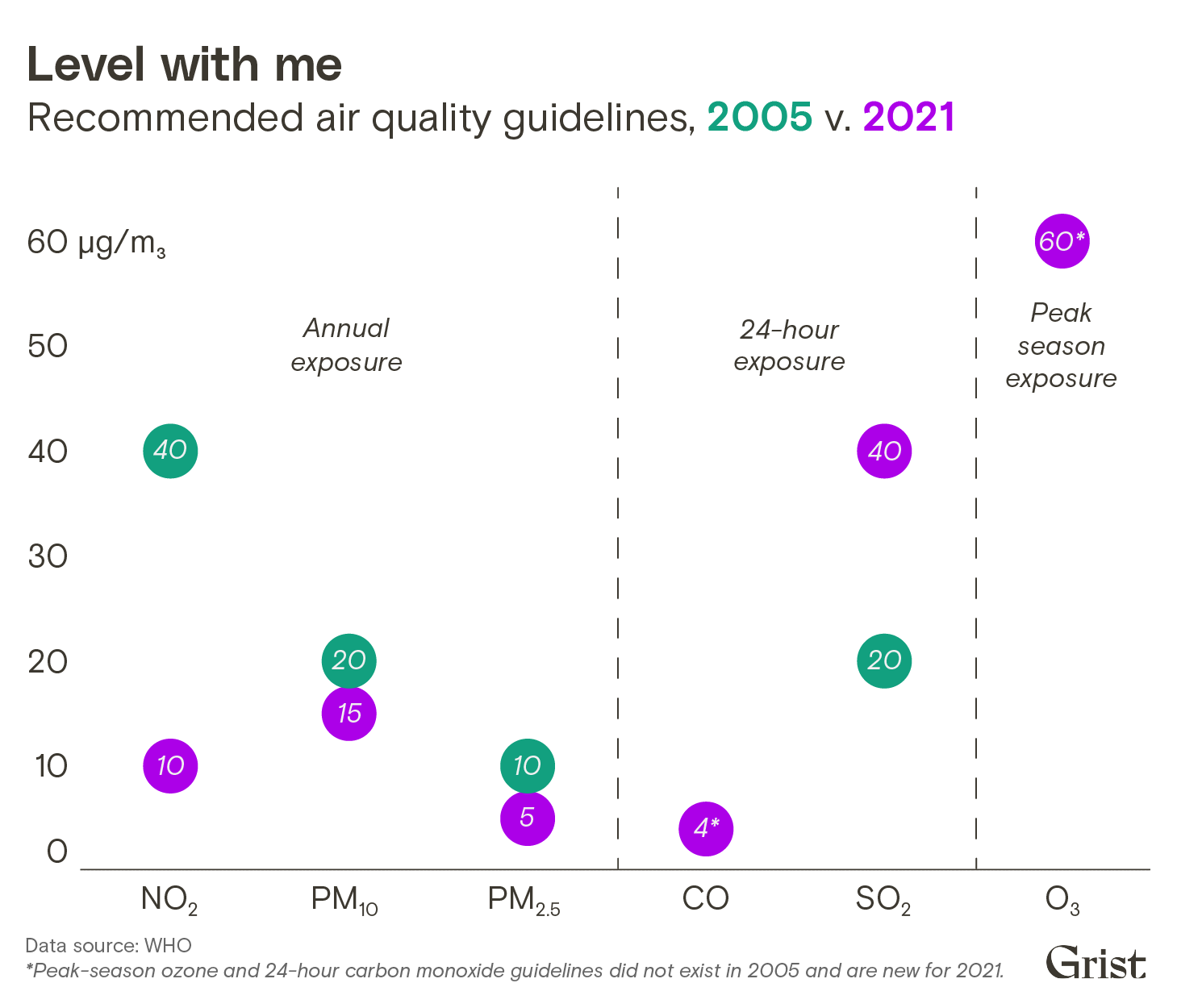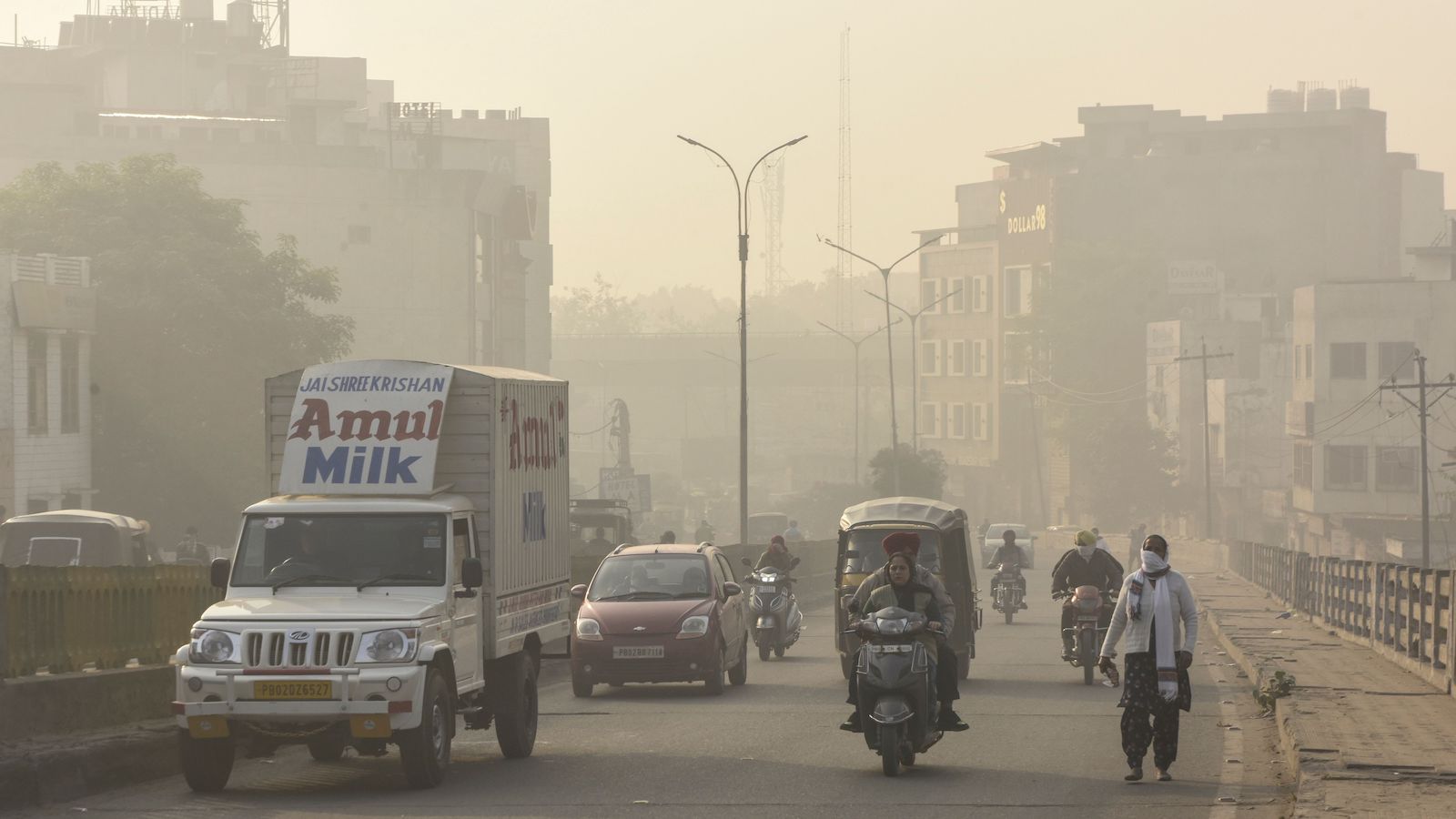On Wednesday, the World Health Organization, or WHO, published an update to its air quality guidelines — the international rubric that sets non-binding standards for safe levels of air pollution for the world’s countries. The update, which is the organization’s first since 2005, says that air pollution, alongside climate change, is one of the biggest environmental threats to human health. It sets higher standards for almost every pollutant the organization monitors. Adhering to these new guidelines, the WHO said, “could save millions of lives.”
In the 16 years since the WHO last updated its air quality guidelines, evidence of the harms of indoor and outdoor pollutants has only grown. The new report notes that exposure to air pollutants causes 7 million premature deaths each year. In children, air pollution can slow lung growth, fuel respiratory infections, and exacerbate asthma. In adults, premature deaths due to air pollution often present as heart disease and stroke, though research is beginning to suggest that diabetes and neurodegenerative conditions are also linked to bad outside air quality.
The new guidelines set levels for six pollutants, tightening the safe air quality levels for nitrogen dioxide and two types of particulate matter — PM2.5 and PM10 — but loosening the standard for sulfur dioxide. They also create new standards for peak season ozone — which occurs during the summer months when afternoon light mixes with ground-level volatile compounds — and carbon monoxide, caused by vehicles and machinery. Neither compound had been included in the WHO’s 2005 guidelines.

The six air pollutants come from a variety of natural and human-made sources, including the combustion of fossil fuels, burning cigarettes, and climate change–induced wildfires. The small, airborne particles known as PM2.5 — named for their diameter of just 2.5 micrometers, 30 times smaller than the width of a human hair — are particularly harmful, the report said. Their tiny size allows them to lodge deep into people’s lungs and cause respiratory problems. The tiniest particles can enter the bloodstream, and have been associated with cardiovascular and neurological damage, and have even contributed to excess deaths from COVID-19.
The WHO update comes on the heels of previous research illustrating these particles’ far-reaching health consequences. One report published earlier this month by researchers at the University of Chicago found that elevated exposure to PM2.5 was responsible for shaving 2.2 years off of the average human being’s life expectancy. That number was even worse in much of the developing world. Even as air quality has improved in many of the world’s wealthiest countries, particulate emissions from heavy industry, crop burning, and industrial waste are curtailing lives by as much as five or six years in places like India and Bangladesh.
Ken Lee, a research associate at the University of Chicago and a coauthor of the report, lauded the WHO for its stricter guidelines. Bringing global air quality in line with the WHO’s old standards would already have prevented the loss of 17 billion years of life annually, he said, but alignment with the new standards could do even more — potentially adding 2.7 years to the average global citizen’s life expectancy, according to a computer model he helped develop. Worldwide, that would be the equivalent of preventing the loss of more than 21 billion years of life annually.
The results would be particularly dramatic in developed countries like the U.S., Lee added, where PM 2.5 concentrations are already relatively low. After plugging the WHO’s new numbers into his model, he estimated that the percentage of Americans currently exposed to levels of PM2.5 above the WHO’s safe threshold would jump from 6.6 percent to a staggering 94 percent. Meanwhile, the fraction of the global population exposed to PM2.5 pollution would jump from 82 to 96 percent.
Reducing the threshold for PM2.5 “has pretty major implications, Lee said. “The health benefits of meeting that more stringent guideline are even greater.”
However, the WHO’s new guidelines will not alleviate health disparities unless countries move to enforce them. According to a report released earlier this month by the United Nations, 43 percent of countries fail to define the term “air pollution” in any of their legislation, and nearly one-third don’t have air quality standards at all. Another 5 percent have standards that are part of unenforceable guidelines. Those that do have enforceable standards, the U.N. report said, tend to be out of step with WHO guidelines.
The world’s countries are also failing to adequately address climate change, the single greatest threat to human health, period, 200 medical journals warned earlier this month. The WHO’s new update isn’t a climate report, but one of its biggest takeaways is that climate action and better air quality go hand in hand. Addressing one invariably addresses the other, because many types of air pollution — such as emissions from dirty sources of energy, black carbon from wildfires exacerbated by anthropogenic warming, and ground-level ozone from vehicles — would be reduced by climate action. “By striving to achieve these guideline levels, countries will be both protecting public health as well as mitigating global climate change,” the report said.



